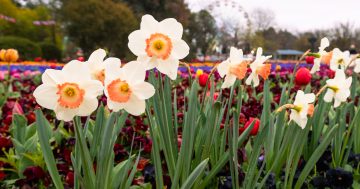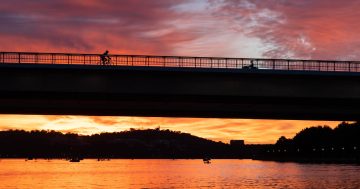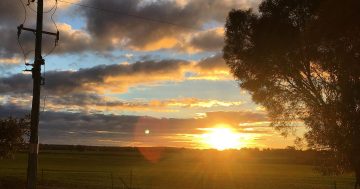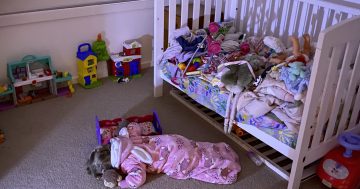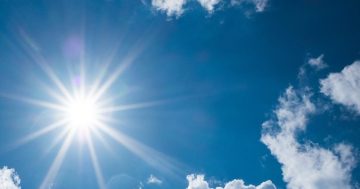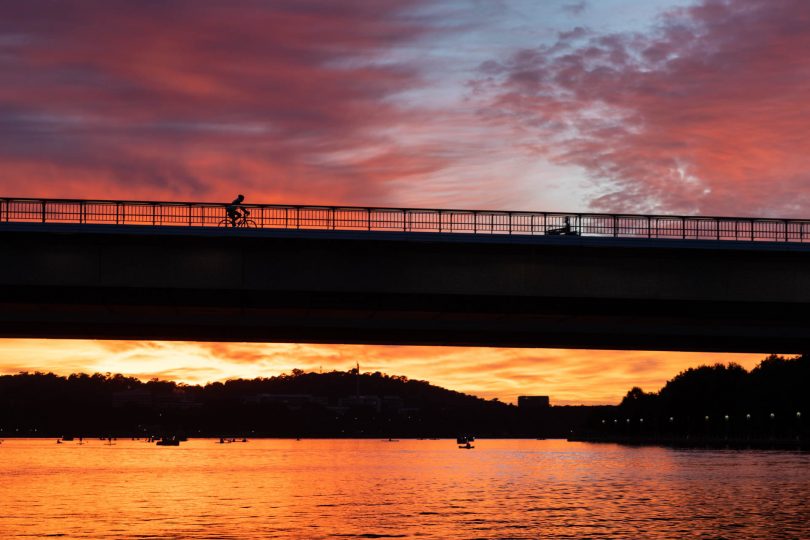
A perfect Canberra sunrise, but the ‘benefits’ of daylight diminish as the sun rise later. Photo: Michelle Kroll.
On Sunday, we get to go back to God’s time – and it can’t come soon enough.
Ever since summer faded away, we’ve had to get up in the dark, and by now, it is well after 7 am that the sun finally greets us.
Each morning it seems like you’re up preparing for one of those all-day drives to Queensland, sitting down to breakfast in the dark and heading off in the post-dawn glimmer.
For those of us who like to get a decent walk or run in before work, it’s one of life’s great joys to be out with the first rays of the day and the refreshed earth.
But it’s been pitch black for weeks now, so not only does it feel not so safe but also depressing under streetlight rather than the promising glow of the eastern sky.
After the deep of Canberra’s icy winter passes, the return of the sun to earlier times comes as a great relief. But just as we warm to more morning light, daylight saving descends like a curtain and we’re back in black.
Sure there is no theft of time, just manipulation to adjust our timetables, so there appears to be more evening light.
So why do we do it?
The original argument was that it saved energy, but the evidence on that is mixed at best. And I don’t know if needing to light up the house at 7 am achieves that.
It’s also for recreation or getting a few jobs done after work. The trouble is, in Canberra, the evening is the warmest part of the day. In summer, that usually means taking shelter, not pounding the pavement, cutting the grass or even alfresco dining.
Ask any parent what it’s like in high summer to have the light going strong at 9 pm and trying to put small children to bed.
When we turn our clocks back next week, our bodies will undergo the annual physical adjustment, a week or two of jet lag as the body clock adapts.
Apparently, it’s prime time for heart attacks too.
The United States Senate recently passed a bill to make daylight saving permanent. One of the arguments is that the spring and autumn adjustments are health hazards.
Other ailments include emotional and behavioural disorders, depression, stress-related immune disorders, poor gut health and accidents.
But don’t even think about daylight saving all year round. Imagine what a July morning in Canberra would feel like.
Being out of sync with the natural rhythm of the day, especially if it means missing out on that nurturing morning light, just isn’t good for you.
There are plenty of studies about the health impacts of shift work and daylight saving falls into that category, especially if it runs from October to April.
Research points to daylight saving causing sleep loss, especially when people are trying to cram extra activities into the back end of the day when the body should be really winding down in preparation for that rejuvenating seven to eight hours in the sack.
In a society where sleep deprivation is the new normal, that’s not good.
Queensland has long been the outlier when it comes to daylight saving in Australia.
It cost the state cricket team a Sheffield Shield one year, and the Sunshine State is often the butt of jokes about its backward ways, fading curtains and cows that won’t give milk.
But in this, it has got it right, and the clue is in its name – daylight saving – Queensland just doesn’t need it.
Here in Canberra though, along with NSW and the rest of them, the owls rule, and the larks are forced to go along with it.
It may not be a high order issue in these disturbing times, but it would not take much to admit the twice a year time trick is a failed experiment that just doesn’t deliver the benefits proponents say it does and causes a bunch of problems that we don’t need.
God’s time has worked since the beginning. That’s good enough for me.












